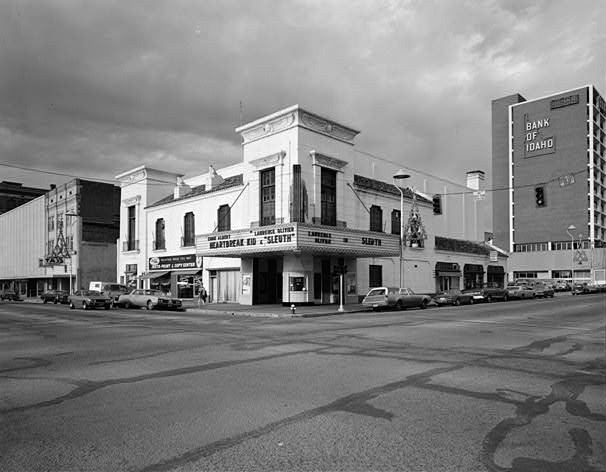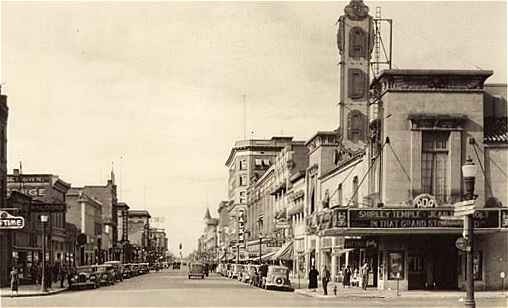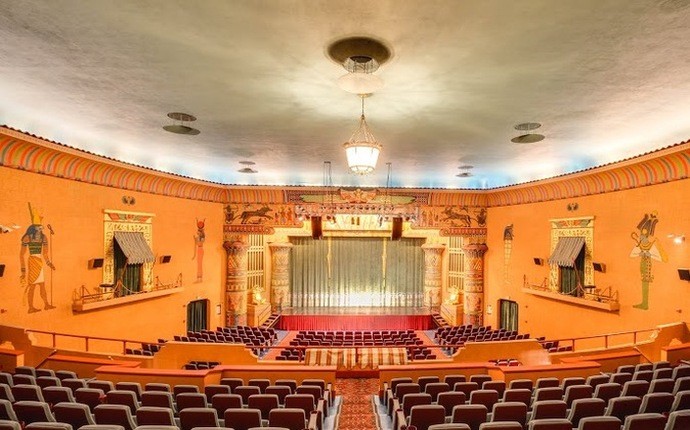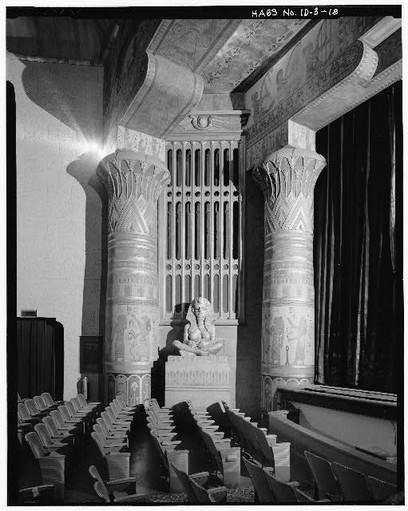Egyptian (Ada) Theatre
Introduction
Text-to-speech Audio
Images
Ada Theatre in Boise, Idaho, 1973

Scene of Downtown Boise, including the Ada Theatre, in 1937

View of the Theatre's stage from the back of the balcony.

View of proscenium columns and decorations within the Ada Theatre

Backstory and Context
Text-to-speech Audio
History of the Ada Theatre
Before the construction of the Ada Theatre in 1927, Boise had a variety of fairly rowdy bars. Leo Falk, who owned a department store in downtown Boise, sought to reverse this bad publicity and build a picture theatre that would appeal to families. To build the theatre, Falk hired famed local architect Frederick C. Hummel, of the firm Tourtellotte and Hummel, to design the theatre.
At first, Falk was adamant about building a Spanish-style theatre, while Hummel preferred Egyptian. In the end, Hummel won, and with a $100,000 bond issue financed by the investment house Childs and Co., and Jordan and Sons acting as the builders, the Ada theatre was built in 1927 to much acclaim.
On opening night, April 19, 1927, scores of people lined up to see the John Barrymore in the film, “Don Juan” (the first film to use the Vitaphone sound-on-disc sound system). Over the years, the Ada Theatre has been a staple among the Boise movie-lover scene. The Theatre hosted the world premiere of “Jeremiah Johnson” on December 2, 1972, with Robert Redford in the audience; Ada Theatre was also the chosen location for the world premieres of “The Bourne Identity,” “The Bourne Supremacy,” and “The Bourne Ultimatum.”1
Architecture of the Ada Theatre
The architectural beauty of the Ada Theatre endures as one of its most captivating elements. Among the prairie-style buildings dominating downtown Boise, the Egyptian-revival style of the Ada Theatre makes it a local landmark. Furthermore, with the widespread fascination with Egyptology at the time of its construction, the Ada Theatre's overall architecture features full usage of Egyptian symbols, including sphinxes, scarabs, sacred vultures, and so forth. Even the two-story, rectangular structure of the building, which features reinforced concrete walls, provides the theatre with the appearance that it was made out of large blocks of rock, such as those used on the pyramids.
Inside the lobby, the vaulted room was once richly painted to give off a mosaic effect of gold and precious stones. Surrounding the lobby were concrete walls showing symbols and images from the Book of the Dead as well as hieroglyphics from the papyrus of Ani. Since its construction, the Ada Theatre has undergone several renovations, though many of the Egyptian-themed images on the interior walls can still be found. In 1999, however, the Theatre was remodeled to better resemble its original design.2
